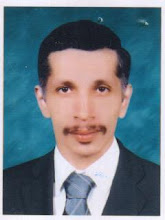Although recognition of Pharonic art was signaled in Cairo by the establishment in 1858 of the Department of Antiquities and the Egyptian Museum, the appreciation of Arab and Islamic Art lagged behind. The Khedive Ismail approved a proposal to establish a Museum of Arab Art in the Courtyard of the Mosque of Baibars, but this was not carried out until 1880 when Khedive Tawfiq ordered the Ministry of Endowments (ar: Awqaf) to set it up.
Julius Franz, an Austrian Scholar of Hungarian Descent, the Head of the Technical department at the Awqaf, proposed in 1881 that the ruined Mosque of the Fatimid Caliph al-Hakim, adjacent to the Bab Al-Futuh, to be a provesional seat for the Museum. A Gallery was accordingly furnished there in the eastern arcade, consisting initially of 111 architectural pieces taken from other Monuments.
Matters improved the same year when Khedive Tawfiq approved the "Committee of Arab Antiquities", whose duties included running the Arab Museum, and providing it with objects as well as preserving the monuments. As a result, the arcades of the mosque were filled to overflowing. in 1884 a two story structure was built in the courtyard to house the collection of 900 objects, although its staff consisted of only one curator and a door keeper.
in 1887 Max Hertz, also Austro-Hungarian, replaced Julius Franz, and began making many changes, he suggested the name of the Museum back then as the gallery of Arab Antiquities (ar: Dar Al-Athar Al-Arabiya), by 1895 the collection numbered to 1,641, and the new building became too crowded, he requested the Awqaf to build a larger Museum, and so in 1899 the Foundations of the present larger Building in Bab Al-Khalq.
The new and current Building was designed by Alfonso Manescalo, and was completed in 1902 in neo-Mamluk style, with its upper story housing the National Library. The old Museum in al Hakim was demolished in the 1970s during refurbishment of the Mosque




